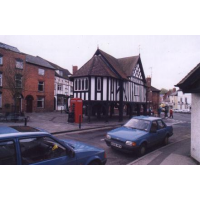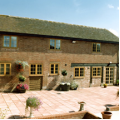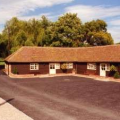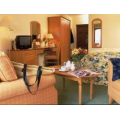
|
|||||

Gallery 54 - Ross on..
 Contemporary abstract art, ceramics and glassware Contemporary abstract art, ceramics and glassware
Life Changing Activi..
 Fun, adventure, and personal growth in the Great Outdoors Fun, adventure, and personal growth in the Great Outdoors
|
Newent

Newent is certainly one of the most attractive towns in the Forest of Dean area. It is a thriving, unspoilt market town with a wide range of attractions for the shopper and visitor. Many of the buildings date from the 13th century, and centrepiece of the town is the Old Market Hall, which was built in 1668. The area around Newent has long been known for its wild daffoldils which grow naturally in the woods and meadows around the town. Within living memory, they grew in such profusion that school children picked flowers to be sent to hospitals as far away as London. The Great Western railway used to put on special trains to Newent for people to come and pick the daffodils! The area around Newent has long been known for its wild daffoldils which grow naturally in the woods and meadows around the town. Within living memory, they grew in such profusion that school children picked flowers to be sent to hospitals as far away as London. The Great Western railway used to put on special trains to Newent for people to come and pick the daffodils! Nowadays, being more conservation minded, we come to look at their beauty, and picking of the flowers is not encouraged. The town has a long history, for finds of Mesolithic and Neolithic flint 8,000 years and by the Bronze age, metal working was taking place in the area. It was during the Roman period however that Newent began to grow in importance and by the 2nd century AD it was a key settlement with roads linking it to Ariconium, Gloucester and the iron ore outcrops at Wigpool near Mitcheldean. The Roman site at Newent is large, being spread over 117 acres and seems to have been a civilian venture rather than an official site, for as well as an industrial area where iron smelting took place, it has a group of buildings identified as a workers' settlement and in a separate field, a high status villa, linked to the other two by a road. By late Saxon times, Newent was a manor which was held by the king and soon after the Norman Conquest, a motte & bailey castle had been built at Castletump to the north of the village. Iron working still continued in the area and this helped establish the village, which by the 14th century had grown in to a small town. A market was established quite early and the centrally sited Market House still exists, although the present structure is late 16th/early 17th century. The church of St Mary was built in the 13th century, partially rebuilt after the nave collapsed in the 17th century and in 1968 its octagonal spire was partially taken down after it too was found to be dangerous.
Churches
St. Mary's, in Newent, was a place of worship in Anglo-Saxon times. In the porch, there is an important cross shaft of Northumbrian provenance which probably dates to the 9th century, and was discovered in the churchyard in 1907. Inside the church there is another relic which is a unique stone tablet. This depicts the "harrowing of Hell" on one side and a bishop on the other. This tablet, which may date from the 11th century, bears a distinct resemblance to grave slabs found in Northumbria, though it is thought that it was used as a portable altar. For over 700 years, the building has been added to, rebuilt and restored and now attracts tourists and historians alike with its varied and unusual architecture and history. The church was built in the 13th century, partially rebuilt after the nave collapsed in the 17th century and in 1968 its octagonal spire was partially taken down after it too was found to be dangerous. The churchyard also attracts historians for its interesting tombs dating from the 17th century. The 150 foot high spire on its 14th century tower is a landmark for miles around marking one of the major historic buildings in the district.
Schools
Newent Community School (Secondary School)Picklenash Junior School Glebe Infant School
Nearby Accommodation
Nearby Attractions
|
||||
|
|
|||||



